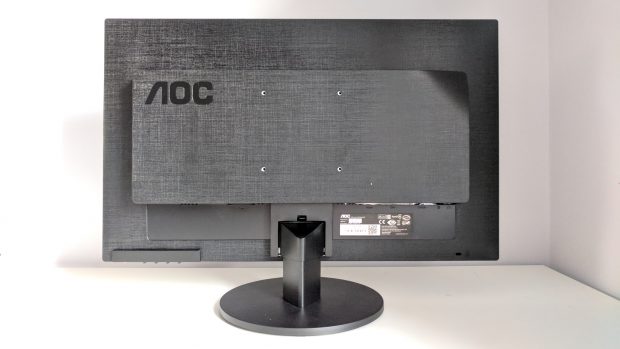Adding a second display to your PC can convey a number of advantages, whether or not it’s giving you extra space to work or, for the YouTube and Twitch crowd, the flexibility to learn internet pages whilst you sport. Finding room in your price range for one, nevertheless, is commonly a lot more durable, particularly should you’ve already spent rather a lot in your first monitor. Enter the AOC E2470SWH.
At just £105, this 24in, 1920×1080 TN panel is without doubt one of the least costly methods of including a bit extra actual property to your present display setup. It’s fairly easy and doesn’t embody any fancy options like AMD FreeSync or a excessive refresh fee, however at this type of worth, I wouldn’t anticipate it to, both.
I’m not going to lie, the E2470SWH’s picture high quality isn’t unbelievable, but it surely’s not horrible both, masking 86.9% of the usual sRGB color gamut as soon as I’d calibrated it with my X-Rite i1 Display Pro. To provide you with an concept of what that determine interprets to in observe, colors had been roughly in the identical ballpark as my AOC Q2770PQU reference monitor (they weren’t hideously inexperienced or overly blue, for example), however the panel’s bias in the direction of the cooler, extra impartial ends of the spectrum meant photographs on the E2470SWH lacked the identical form of heat and vibrancy.
This wasn’t helped by a comparatively excessive black stage of zero.36cd/m2 (the nearer it’s to zero.0cd/m2, the higher), however to be sincere, that is fairly commonplace stuff for an inexpensive TN display, so on the entire it’s probably not that shocking – it’s simply the TN screens I’ve been reviewing not too long ago have all scored above expectation. It’s lots shiny sufficient for on a regular basis use, too, with a most brightness stage of 240cd/m2. Again, not spectacular, however you’d begin straining your eyes should you checked out something a lot larger for any vital size of time.
What did increase an eyebrow, nevertheless, was its moderately disappointing distinction ratio of 541:1. This is round half what I’d usually anticipate to see right here, and the consequences had been plain to see. Areas of shadow, for instance, had been missing intimately, exhibiting patches of gray as an alternative one clean gradient, and vertical viewing angles had been significantly poor, leading to a visual color shift at any time when I moved my head up and down.
This is a disgrace, because it means the E2470SWH’s beneficiant quantity of backwards and forwards display tilt is totally wasted, as darker areas of a picture simply turned fully black once I pushed the display again whereas brighter areas grew to become noticeably gloomy. Turning its distinction establishing didn’t assist a lot, both, as whites and light-weight areas of the display simply changed into a single crushed mess.
On the upside, I couldn’t see any proof of backlight bleed, the place the underlying LEDs leak by way of to the principle picture, and its various number of ports give it loads of flexibility. There’s no DisplayPort, however you do get VGA, DVI-D and HDMI, plus a headphone jack and an audio line in.
On its personal, the E2470SWH could be an all proper buy for these after an affordable second display. However, while you sq. it up towards AOC’s marginally dearer G2460VQ6, which prices round £135, the E2470SWH simply can’t compete. Not solely does the G2460VQ6 comes with a a lot better, extra correct panel, but it surely additionally has AMD FreeSync assist to assist your video games seem smoother in case your graphics card isn’t fairly as much as the duty of working issues on the highest body charges. There’s additionally AOC’s G2460PF to contemplate, which throws in an equally glorious panel plus an adjustable stand, extra ports and a better refresh fee for just a bit bit extra at £217. If your price range’s strictly restricted to the £100 finish of the spectrum, although, then it’s the G2460VQ6, not the E2470SWH, that ought to be prime of your consideration checklist.





